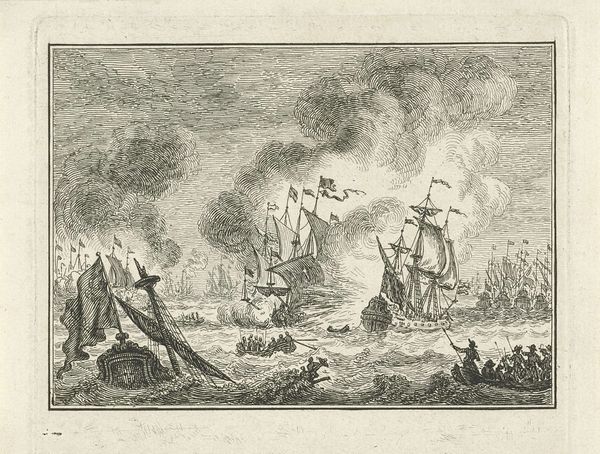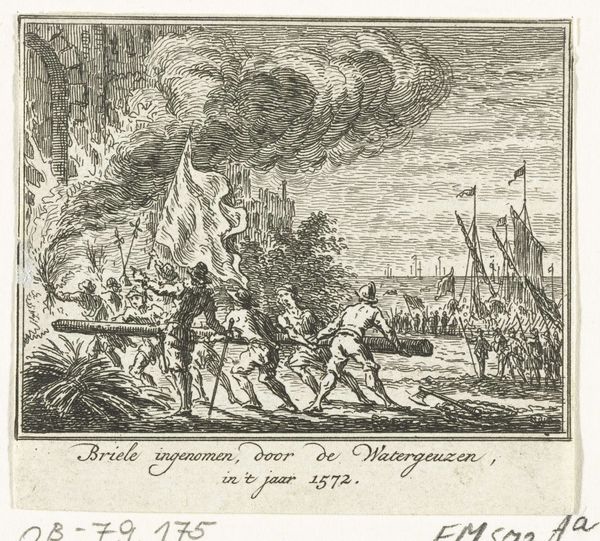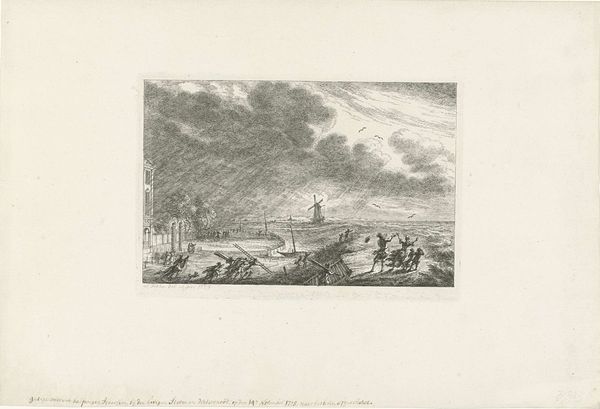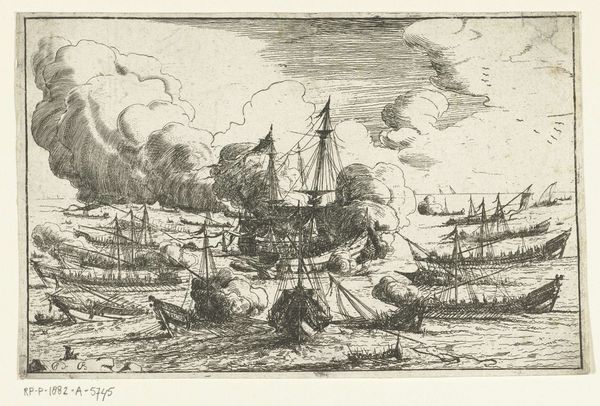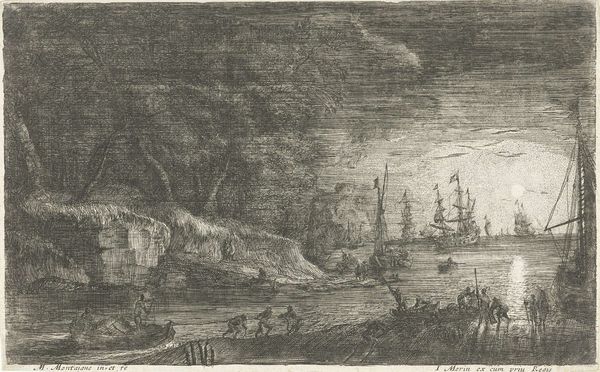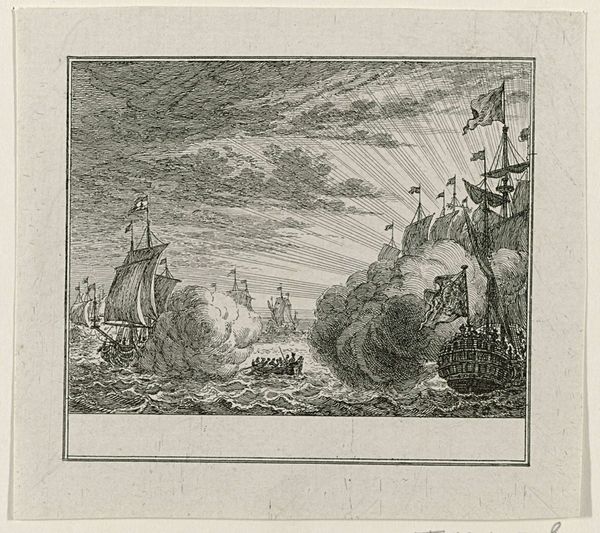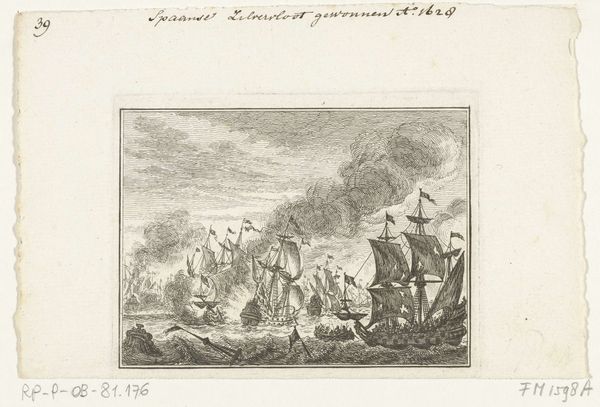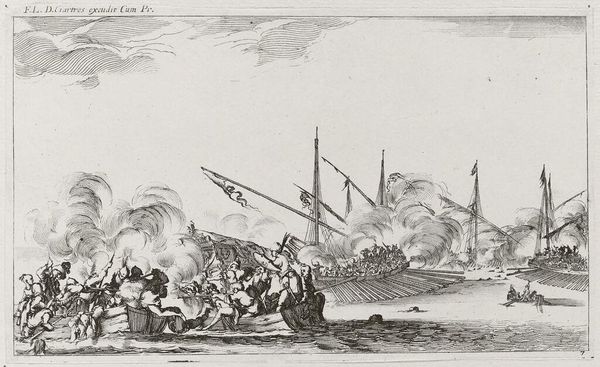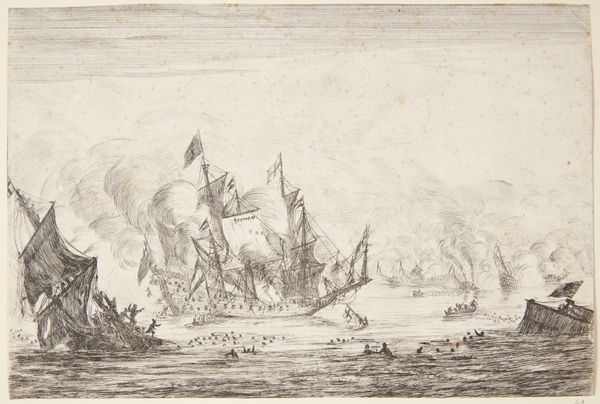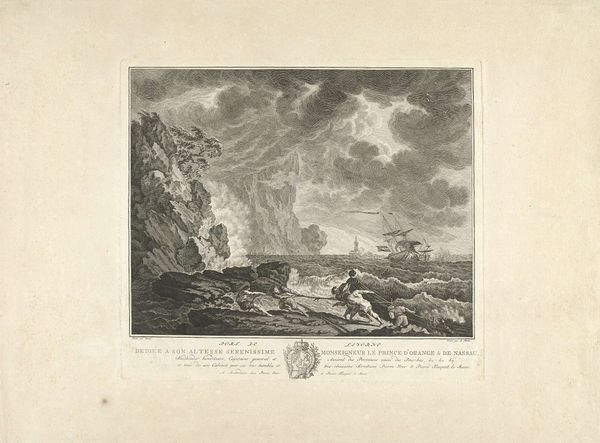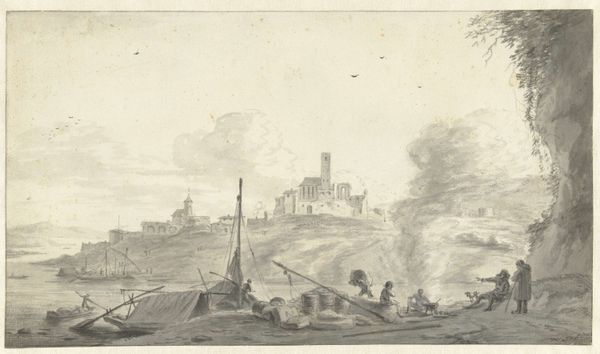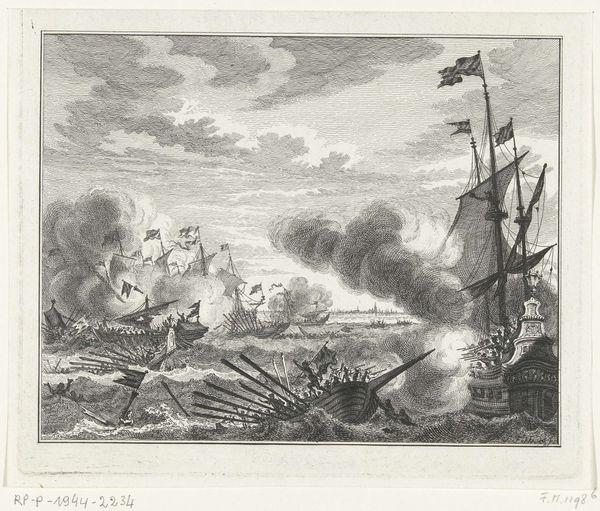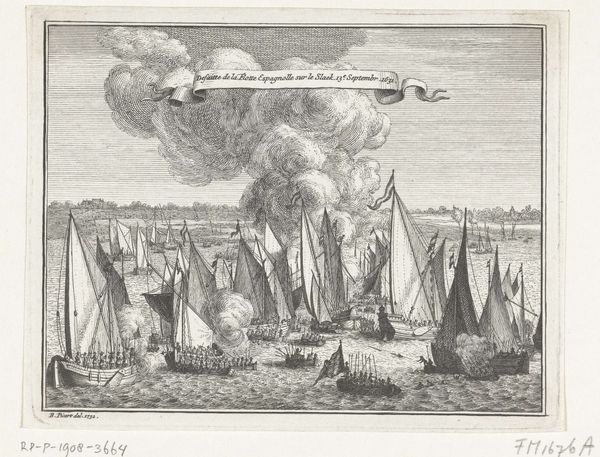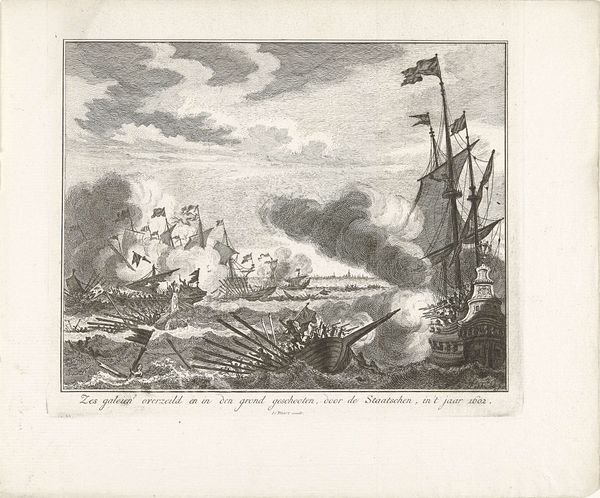
Dimensions: height 93 mm, width 107 mm
Copyright: Rijks Museum: Open Domain
Curator: This is Simon Fokke's "Laatste zeeslag van Tromp, 1653," created sometime between 1782 and 1784. It's an etching, currently held here at the Rijksmuseum. Editor: It's certainly dramatic! The burning ship in the foreground immediately catches the eye, a stark image of destruction and the human cost of battle. Curator: Absolutely. Consider the process involved in creating this print. The fine lines etched into the metal plate, meticulously rendering the chaos of naval warfare, reflect the skilled labor required. Then there’s the labor to make it in the first place. And the paper! How many hands did this paper go through? This wasn't just for art consumption; it was about accessible imagery for a wide audience. Editor: Precisely! And the accessibility speaks volumes about the social and political landscape. This image of Tromp’s last battle served a crucial role in shaping national identity. Naval victories were powerful tools for nation-building. To whom was it supposed to appeal? It probably hung in a number of government buildings at one time, given its grand subject. Curator: Notice the focus on narrative. Fokke is not merely depicting ships; he’s telling a story. This print offered a readily available narrative for public consumption that elevated certain forms of manual labor into artistic labor by a privileged individual. Editor: Yes, and it reinforced particular ideologies about Dutch power and maritime strength. How this single etching might circulate tells you a lot about who controlled the image of the Dutch, who consumed that image, and how it served political or social agendas. Curator: Fokke transformed materials of the everyday like ink and paper, which we too often forget. By rendering a historic event, this becomes something powerful as people invest in Dutch legacy. The commodification of this kind of history through printed images allowed people to reflect on how it might support emerging ideas of Dutch national identity. Editor: Exactly! It allows a collective visual memory to spread and endure. An inexpensive item like this had immeasurable public impact on people's view of Dutch legacy, shaping perspectives through iconic imagery. Curator: Reflecting on the print, I’m reminded that art extends far beyond the aesthetic realm— it is entrenched in labor, production and consumption, as well as economic status. Editor: I’m leaving with a renewed sense of how art functions within the historical narrative and serves as a constant site for constructing and negotiating collective identities.
Comments
No comments
Be the first to comment and join the conversation on the ultimate creative platform.
